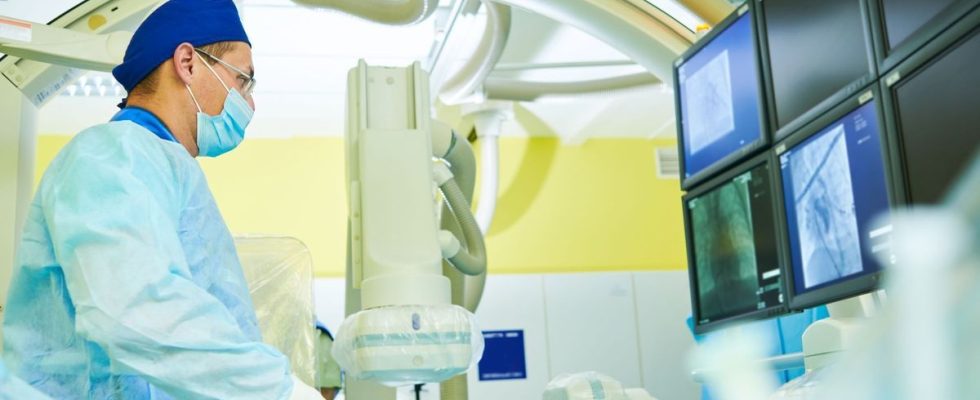Published on
Updated
Reading 2 mins.
Endometriosis is a pathology that does not only affect the pelvic region. When it settles in the abdomen, it is called parietal endometriosis. Its treatment, usually surgical, can also be carried out by percutaneous cryoablation. The explanations of Pr Afshin Gangi, interventional radiologist at the University Hospital of Strasbourg.
We often talk about pelvic endometriosis, but much less about its variants, such as parietal endometriosis. It’s the same pathology, located differently (in the abdomen), but just as painful.
“It usually occurs after a surgical procedure such as a caesarean section or another operation on the abdomen. The procedure will disseminate cells which will develop in the abdomen, thus creating nodules of parietal endometriosis, which are very painful” explains Prof. Afshin Gangi, interventional radiologist at Strasbourg University Hospital.
Superficial and of a small diameter, these nodules, which most often form in an inguinal fold or near the navel, can affect the quality of life. Indeed, they are sensitive to the touch and become particularly painful with each return of the rules.
Percutaneous cryotherapy, an alternative to surgery
To treat patients with parietal endometriosis, doctors at the Strasbourg hospital came up with the idea of using cryotherapy, a well-known cold treatment technique. “We started in 2007 sporadically” remembers Professor Gangi. “The treatment consists of inserting a fine needle 2 millimeters in diameter into the muscle wall, under imaging control. Once in the heart of the nodule, it is frozen, in a way by the cold. The cells are then destroyed and the body takes care of destroying the “cellular” waste. adds the interventional radiologist. The gesture, much less invasive than surgery, is performed under local anesthesia and lasts about an hour. “It is an intervention that leaves no scars, it is an important point to emphasize” further indicates the specialist.
A technique that could become a reference treatment
In addition to the Strasbourg University Hospital, other centers in France now offer this technique. “But this is not yet the case everywhere” laments Professor Gangi. “Recently, I received a patient in consultation who came to see me following research on the internet. Where she lives, she was offered conventional surgery.”.
Simple and easy to acquire, according to Professor Gangi, percutaneous cryoablation has many advantages: “Interventional radiologists used to this type of gesture can quickly and easily acquire the cryotherapy technique. Visible in real time thanks to imaging, it is very advantageous for professionals, but also for patients.”
Could this technique become the reference for the treatment of this type of endometriosis? “It is in any case an important progress and it is essential to talk about it. It is not normal that these women suffer so much. Endometriosis is a pathology which is expensive and which has a significant impact on the quality of life. , and this, on different levels: social, professional, family… It is a beautiful evolution of treatment which deserves to be proposed to all patients who suffer from this pathology”.
